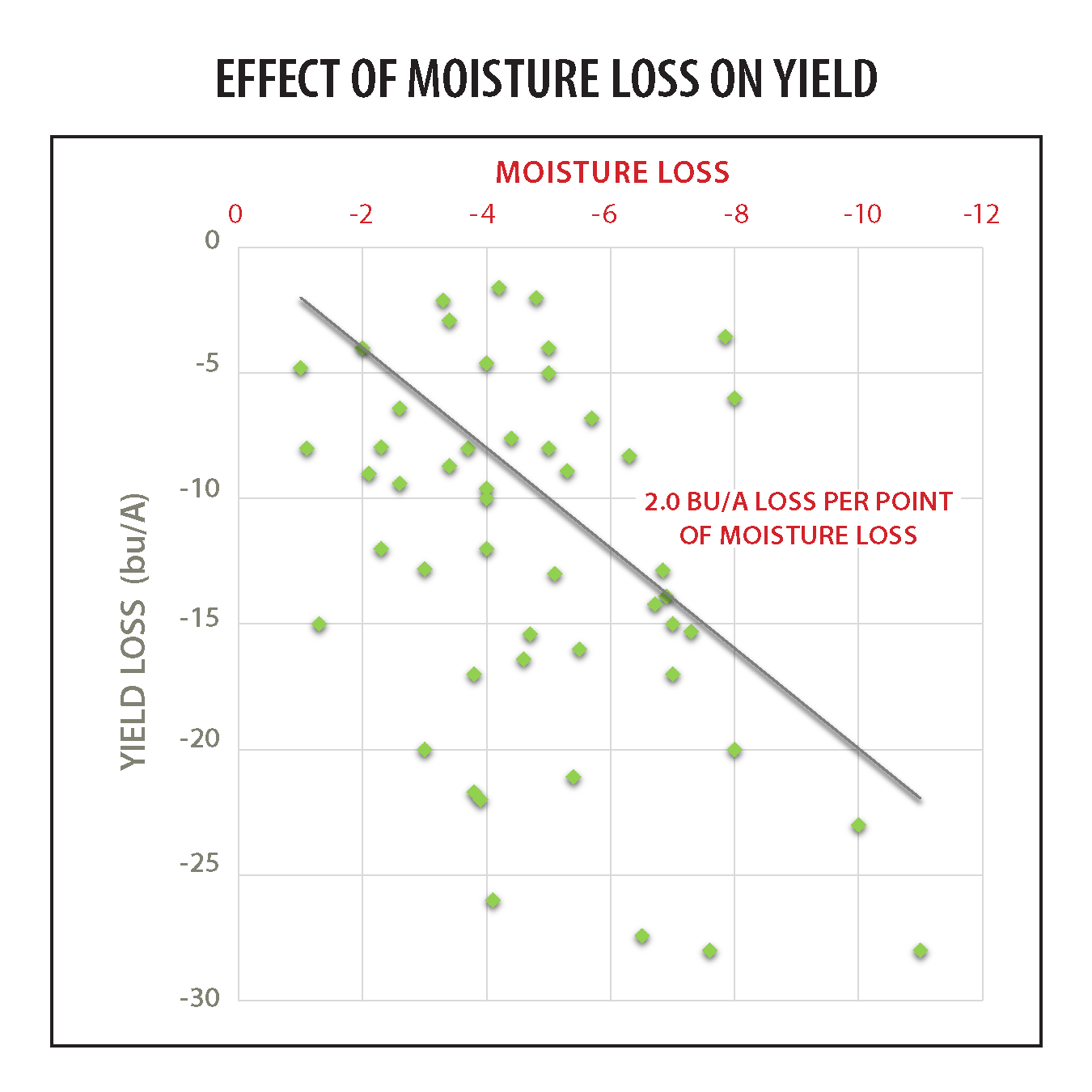Customize your wyffels experience
You don’t have to work for wyffels to be an insider
Get access to exclusive agronomic content, product downloads and more.
Harvesting early does bring an additional cost of paying to dry the grain down to the desired moisture, but Wyffels Agronomy Trial data shows there is also a cost to delaying harvest and drying grain in the field in the form of reduced yield. These trials show yield loss occurs when harvest is delayed at a rate of 0.95% for each point of moisture lost.
Another factor that can influence the decision is the commodity price for corn, and the cost to dry. Because there are a lot of variables to consider, Wyffels has developed this Grain Drying Calculator to help aid in the decision. You can enter all the variables for your situation and it will provide the economic benefit of an early harvest.
Harvesting early does bring an additional cost of paying to dry the grain down to the desired moisture, but Wyffels Agronomy Trial data shows there is also a cost to delaying harvest and drying grain in the field in the form of reduced yield.
The most obvious cause of delayed-harvest yield loss is the mechanical losses that occur at the combine. As corn plants dry down, the plant begins to lose integrity, and the chance of dropped ears, combine ear loss, and kernel loss increases. Corn left on the ground at harvest is profit left on the table.
There is some research that suggests that corn dry matter decreases as it dries. This is known as phantom yield loss. While this is still not fully understood, our research focused on identifying the effect of delayed harvest on yield, no matter the cause. These trials show yield loss occurs when harvest is delayed at a rate of 0.95% for each point of moisture lost.
Keep in mind, 0.95% is the average and in years where drydown occurs very rapidly the losses can be much greater. Regardless, the longer a crop stays in the field after black layer, the higher the risk of yield loss from natural or mechanical causes. Some hybrids are at higher risk for harvest losses, so you should consult your Wyffels Seed Representative to help prioritize your harvest schedule. For more information on making the harvest timing decision, check out the Wyffels Between the Rows on the topic.


District Sales Manager
Champaign, IL